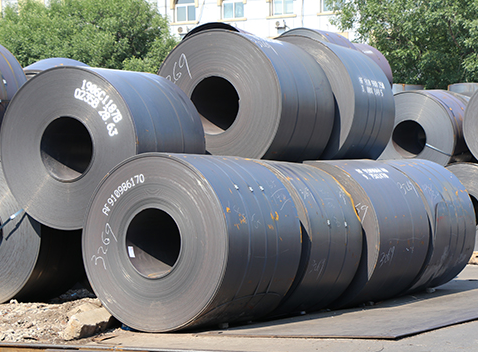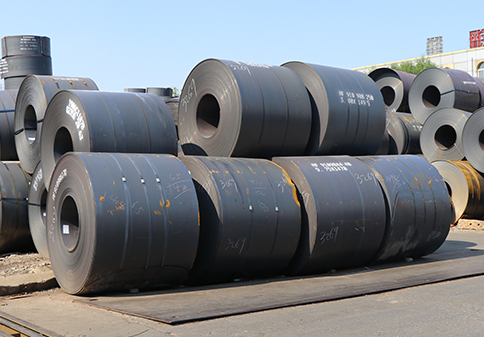GB/ASTM/SS400/ST52 Q195 Q235 Q345 SPCC DC01 A36
Dimension:
Width: 1000mm 1200mm 1250mm 1500mm or customized
Thickness:1.5-12mm
Surface:black
ID: 508mm 610mm
Globally, rolled steel can be hot rolled and cold rolled. Hot-rolled steel is thought to account for up to 80% of global commercial production of rolled steel.
The main advantage of hot-rolled steel is that it costs less than cold-rolled steel. Therefore, it is widely used in applications where less attention is paid to the surface quality and super high-dimensional accuracy, e.g., to make support steel structures for large construction projects or in the engineering industry.
Advantages:
Price: Cold rolled steel is generally more expensive than hot rolled, mostly due to slightly stronger properties.
Flexibility: Because of how high the temperatures are, hot rolled steel is more malleable.
Wide use: Because of this, there are tons of common uses for hot rolled steel.
CREDIT

Hot rolled steel coils from a steel manufacturing plant offer a multitude of benefits, including strength, durability, cost-effectiveness, and versatility. As industry experts and builders, leveraging the advantages of hot rolled steel can lead to enhanced performance and efficiency in various applications.
One of the major advantages of hot rolled steel coils from our steel manufacturing plant is their cost-effectiveness. The manufacturing process is relatively simple compared to other methods, which helps in keeping production costs down. Builders and manufacturers can benefit from this cost advantage without compromising on quality.
CREDIT

Hot rolled steel coils come in a variety of grades and thicknesses, making them highly versatile. Whether it's for structural beams, pipelines, or automotive parts, hot rolled steel can be tailored to meet specific requirements. This versatility ensures that builders and manufacturers have access to the right material for their needs.
Unlike cold rolled steel, which undergoes additional processing, hot rolled steel coils retain a scale layer on the surface. This scale layer acts as a lubricant during machining, resulting in improved mechanical property and reduced tool wear. This is particularly advantageous in industries where precision is crucial.
